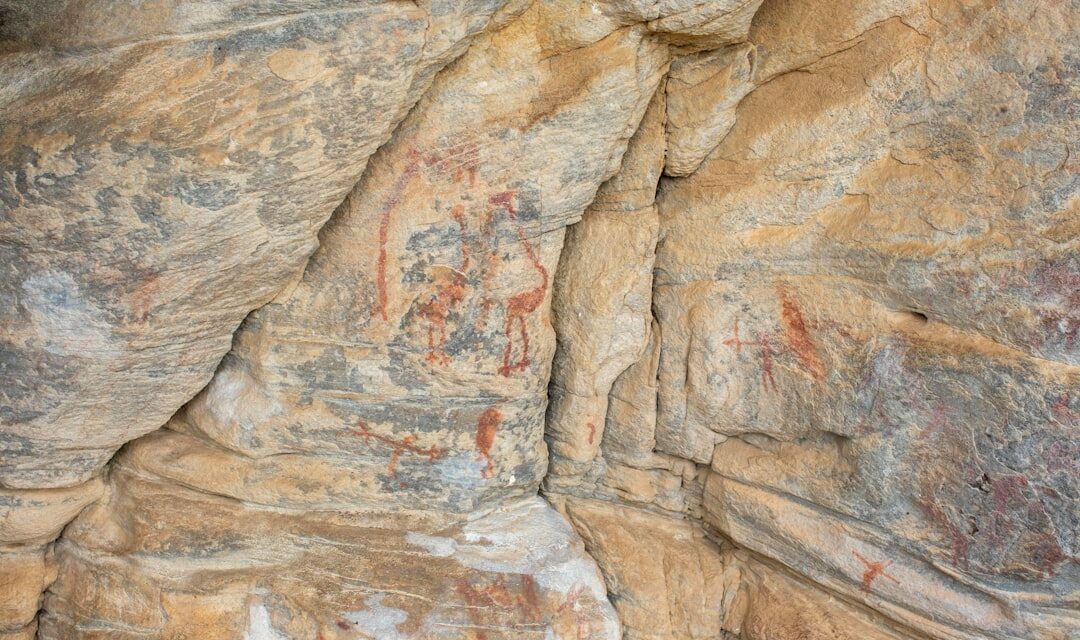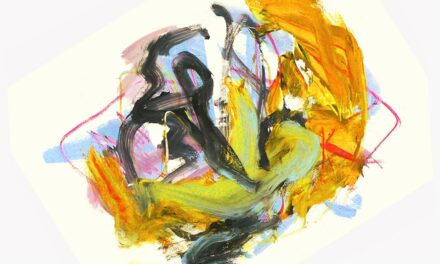Prehistoric art encompasses visual creations from early human societies, primarily during the Paleolithic era (2.5 million to 10,000 years ago). These artistic expressions originated with our earliest human ancestors, who utilized various materials to create images and symbols reflecting their beliefs, experiences, and environment. Examples of prehistoric art have been discovered in caves, rock shelters, and open-air sites, offering valuable insights into ancient cultures and lifestyles.
The development of prehistoric art is closely linked to the cognitive and cultural evolution of early humans. As social structures and communication systems became more complex, visual expression emerged as a means of conveying ideas and experiences. Early prehistoric art likely served ritualistic and symbolic purposes, facilitating communication with the spiritual realm and helping to interpret natural phenomena.
These initial artistic endeavors laid the groundwork for the diverse artistic traditions that would later develop in human societies.
Key Takeaways
- Prehistoric art originated in the Upper Paleolithic period, around 40,000 years ago, and is found in caves and rock shelters.
- Characteristics of prehistoric art include depictions of animals, humans, and geometric shapes, often using natural pigments and simple tools.
- The purpose of prehistoric art was likely to communicate cultural and religious beliefs, as well as to record and preserve important events and rituals.
- Prehistoric artists used materials such as charcoal, ochre, and clay, and techniques such as painting, engraving, and sculpting to create their art.
- Themes and subjects of prehistoric art include hunting scenes, fertility symbols, and shamanistic rituals, reflecting the daily life and spiritual beliefs of early human societies.
- Prehistoric art provides valuable insights into the social, cultural, and religious practices of early human societies, helping us understand their way of life.
- The legacy of prehistoric art can be seen in contemporary art and culture, influencing modern artists and serving as a source of inspiration for new artistic expressions.
The Characteristics of Prehistoric Art
The Early Forms of Prehistoric Art
The earliest forms of prehistoric art were created using basic tools and materials such as stones, bones, and pigments derived from natural sources. These materials were used to create images and symbols on cave walls, rock surfaces, and other natural formations.
Techniques and Characteristics
The artists of the Paleolithic era utilized techniques such as painting, engraving, and carving to create their artworks, often using their fingers or simple tools to apply the pigments or etch the surfaces. One of the most striking characteristics of prehistoric art is its focus on the natural world and the animals that inhabited it. Many prehistoric artworks feature depictions of animals such as bison, horses, mammoths, and deer, often rendered with a high degree of realism and attention to detail.
Symbols, Rituals, and Spiritual Significance
These animal figures were likely imbued with symbolic meanings and were used in rituals and ceremonies to ensure the success of hunting expeditions and to honor the spirits of the animals. Additionally, prehistoric art often features abstract symbols and geometric patterns, which may have held spiritual or ritualistic significance for the ancient artists and their communities.
The Purpose of Prehistoric Art

The purpose of prehistoric art was multifaceted, serving both practical and symbolic functions within early human societies. One of the primary purposes of prehistoric art was to communicate important information about the natural world, such as the behavior and appearance of animals, the changing seasons, and the movement of celestial bodies. Through their artistic creations, early humans were able to document their observations and experiences, passing down valuable knowledge to future generations.
In addition to its practical functions, prehistoric art also served important symbolic and ritualistic purposes within ancient societies. Many prehistoric artworks were created in conjunction with religious or spiritual practices, serving as a means of connecting with the supernatural forces believed to govern the world. These artworks were used in ceremonies and rituals to invoke the aid of these forces, ensuring the success of hunting endeavors, fertility rites, and other important aspects of early human life.
The Materials and Techniques Used in Prehistoric Art
Prehistoric artists utilized a variety of materials and techniques to create their artworks, reflecting the resourcefulness and ingenuity of early human societies. One of the most common materials used in prehistoric art was pigment derived from natural sources such as ochre, charcoal, and clay. These pigments were mixed with water or animal fat to create paints that could be applied to cave walls and other surfaces using fingers, brushes made from animal hair, or simple tools such as sticks or bones.
In addition to painting, prehistoric artists also employed engraving and carving techniques to create images and symbols on rock surfaces. These techniques involved using sharp tools made from stone or bone to incise lines or patterns into the rock, resulting in intricate and detailed artworks that have stood the test of time. Some prehistoric artworks also utilized relief carving, in which figures or symbols were carved out from the surrounding rock to create a three-dimensional effect.
The Themes and Subjects of Prehistoric Art
The themes and subjects depicted in prehistoric art provide valuable insights into the beliefs, experiences, and daily lives of early human societies. One of the most prevalent subjects in prehistoric art is animals, which were depicted with remarkable accuracy and attention to detail. These animal figures likely held symbolic significance for ancient societies, representing important aspects of their environment, spirituality, and survival.
In addition to animal figures, prehistoric art also features abstract symbols and geometric patterns that may have held ritualistic or spiritual meanings for ancient communities. These symbols were often repeated in various artworks, suggesting that they held universal significance within these societies. Some prehistoric artworks also depict human figures engaged in hunting or ceremonial activities, providing glimpses into the social and cultural practices of our ancient ancestors.
The Significance of Prehistoric Art in Understanding Early Human Societies

Uncovering Ancient Societies
Through the study of prehistoric art, archaeologists and anthropologists have been able to reconstruct aspects of ancient societies that are not documented in written records. The themes and subjects depicted in prehistoric art offer insights into the spiritual beliefs and cultural practices of these early communities, shedding light on their worldview and values.
Cognitive Abilities and Creative Capacities
Furthermore, prehistoric art provides evidence of the cognitive abilities and creative capacities of early humans. The sophisticated techniques used in prehistoric art demonstrate the ingenuity and resourcefulness of our ancient ancestors, who were able to create intricate and detailed artworks using only basic tools and materials.
Artistic Achievements and Visual Culture
By studying prehistoric art, we gain a deeper appreciation for the artistic achievements of early human societies and their contributions to the development of visual culture.
The Legacy of Prehistoric Art in Contemporary Art and Culture
The legacy of prehistoric art continues to influence contemporary art and culture in profound ways. Many artists today draw inspiration from prehistoric artworks, incorporating elements such as animal figures, abstract symbols, and natural motifs into their own creations. The simplicity and rawness of prehistoric art have also influenced modern artistic movements such as primitivism and abstract expressionism, which seek to capture the essence of human creativity in its purest form.
Furthermore, prehistoric art has had a lasting impact on our understanding of human creativity and artistic expression. By studying prehistoric art, we gain a deeper appreciation for the universal human impulse to create and communicate through visual means. The enduring legacy of prehistoric art serves as a reminder of our shared cultural heritage and the timeless power of artistic expression to transcend time and space.
In conclusion, prehistoric art represents a rich and diverse tradition of artistic expression that emerged in early human societies. Through its simplicity yet sophistication, prehistoric art provides valuable insights into the beliefs, experiences, and daily lives of our ancient ancestors. Its enduring legacy continues to influence contemporary art and culture, serving as a testament to the universal human impulse to create and communicate through visual means.
If you’re interested in learning more about the evolution of art through different periods, you might want to check out this article on Post-Impressionism. It delves into the artistic movement that followed Impressionism and explores how artists like Van Gogh and Cézanne pushed the boundaries of traditional art. Understanding the development of art over time can provide valuable context for appreciating prehistoric art and its significance in the broader history of artistic expression.
FAQs
What is Prehistoric Art?
Prehistoric art refers to the visual arts produced by humans during prehistory, which is the period before written records were kept. This art includes cave paintings, rock art, and portable art such as sculptures and carvings.
When did Prehistoric Art emerge?
Prehistoric art emerged during the Paleolithic period, which began around 2.5 million years ago and ended around 10,000 years ago with the advent of agriculture and the Neolithic era.
What are the main characteristics of Prehistoric Art?
The main characteristics of prehistoric art include a focus on naturalistic representations of animals and humans, the use of natural pigments for cave paintings, and a reliance on simple tools and materials for creating art.
What are some famous examples of Prehistoric Art?
Some famous examples of prehistoric art include the cave paintings at Lascaux in France, the Venus figurines found across Europe, and the rock art at sites such as Altamira in Spain and Chauvet in France.
What was the purpose of Prehistoric Art?
The purpose of prehistoric art is not fully understood, but it is believed to have served a variety of functions, including religious or spiritual rituals, storytelling, and possibly as a means of communication or social cohesion within early human communities.




